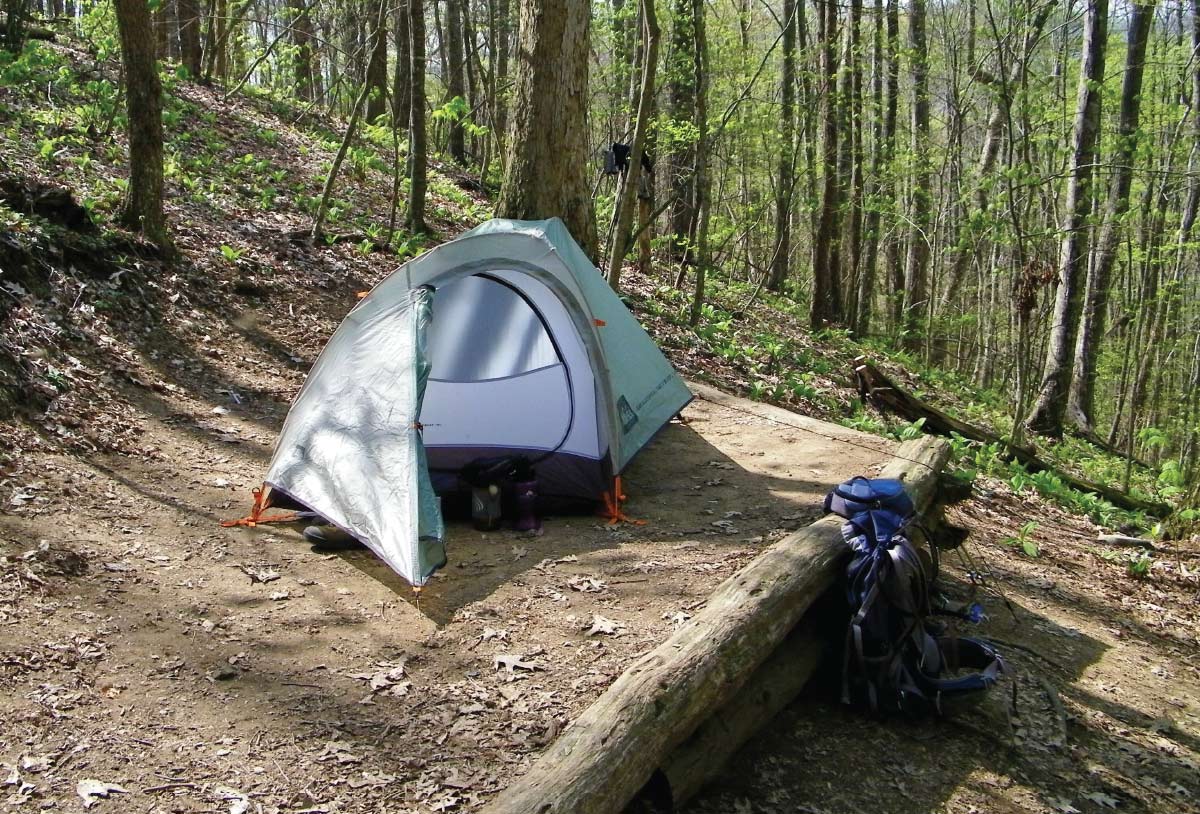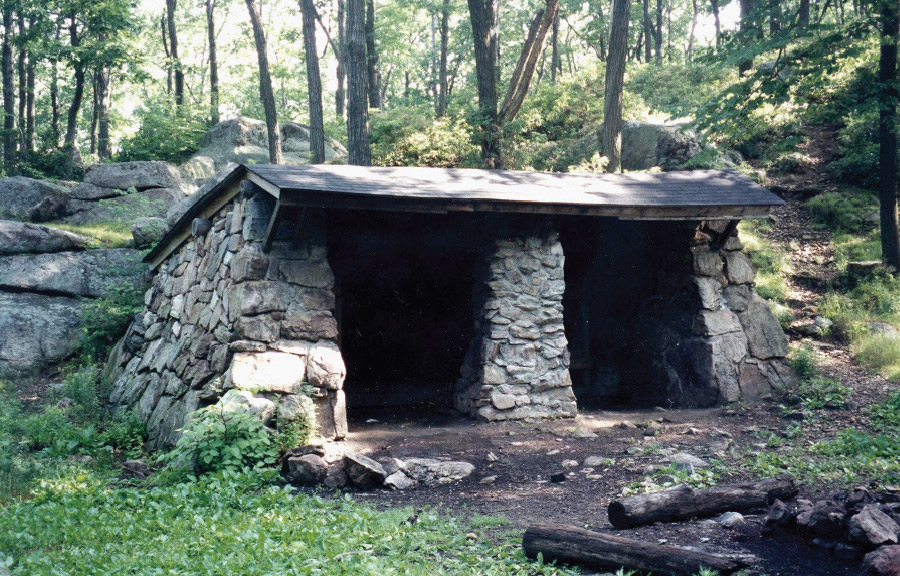
NIGHTS IN THE
WOODS
In his vision for a long-distance trail through the Appalachian Mountains, Benton MacKaye listed “shelter camps” as one of four key features, describing them as follows: “They should be located at convenient distances so as to allow a comfortable day’s walk between each. They should be equipped always for sleeping and certain of them for serving meals….” The first such structures to be built along the A.T. were in New England and were inspired by the European huts that have provided accommodations for mountaineers for centuries.
“There have been overnight sites along the A.T. pretty much since the beginning,” explains Morgan Sommerville, director of Visitor Use Management (VUM) of the Appalachian Trail Conservancy. “Adirondack-style shelters were built because lightweight tents were not commonly available. Originally, many had pole floors and users were expected to go into the surrounding forest to cut tree boughs to stack on the poles for bedding.”
The increase in Trail visitation in recent years has had a huge impact on overnight sites and the surrounding natural environment. When hikers arrive on a rainy evening at a shelter filled to capacity, in a rush to set up a tent before heavier rain sets in, they will often expand existing nearby campsites or create new ones. After a long day spent with only their own thoughts for company, hikers may be drawn to the conviviality of a campsite dotted with a dozen or so tents and decide to join the fun, despite contributing to the sprawl. Hikers who prefer solitude may arrive at a crowded area and venture off the Trail to find or create a new campsite for a quiet night’s rest.
As these extended sites or new camping areas — and the humanmade paths to them — are constantly reused, some have become unacceptably large “mega-campsites” or “mega-clusters” of high-density campsites. Soil is compacted, surrounding vegetation is destroyed, and erosion in the area worsens. The sediment and other runoff that is no longer filtered by plants or organic litter ends up in nearby water bodies. Rare species found around these areas are negatively impacted.
“It’s an ecological and social nightmare,” says Jeff Marion, a recreation ecologist with the U.S. Geological Survey, stationed at Virginia Tech University in Blacksburg, Virginia. “The areas of intense camping impact expand over time due to campsite expansion and proliferation in flat, popular areas near water. This often happens in high densities that degrade the social or experiential conditions the A.T. community seeks to provide.” Without professional management there is little to no opportunity for these areas to recover, and parts of the Trail and its surrounding protected corridor can suffer lasting damage.


According to Sommerville, “The ideal sites are located and built in concert with our recently completed A.T. Experience Analysis so that they preserve the most natural experience possible. When properly located, they provide more privacy than traditional overnight sites.” Marion also points out that the smaller sustainable sites are easier for managers and stewards to monitor and maintain, which is necessary for preserving natural conditions and the Trail experience.
“Previous definitions of the A.T. experience were applied at a Trail-wide level with no good means for applying them at a local level,” says Sommerville. The ATC has since developed management prescriptions and criteria for an experience spectrum from primitive to urban that produces a local gap analysis between the current and desired A.T. experience. Managers and maintainers can then make appropriate decisions about the extent and type of facilities to provide. The SOS program will ensure that both local and Trail-wide needs are being met for sustainability and improved visitor experiences.
Undertaking a project of this size and complexity requires dedicated funding far greater than what is typically needed for routine, annual upkeep and repairs. Little to no government funding is allocated for planning, design, or maintenance of overnight sites or shelters, so funds from private donors are essential.
“Donor funding is allowing us to begin the inventory and priority-setting in close cooperation with local A.T. managers in the Clubs and agencies, which sets the stage for a continuous flow of overnight site mitigation projects,” says Sommerville. The ATC also plans to investigate design and construction of group-specific overnight sites, which donor funding can help optimize. Funds would also support data acquisition that will help A.T. managers prioritize areas for work and help the ATC learn about day hikers — a population for whom there is very little data — and the negative impacts associated with the large annual bubble of thru-hikers.



Beyond safety from the elements, the camaraderie and kindness she experienced from fellow hikers at the sites were some of the most striking moments of her time on the Trail. “At one shelter, a member of the tramily was experiencing snow for the very first time. She made a little snowman and put it on the ledge. Truly a memorable moment for all of us.”



However, what the ATC hopes to achieve through the SOS program is on the opposite end of the A.T. overnight site experience spectrum: to provide hikers with simple, remote, natural-appearing sites.
And the original Hawk Mountain site that was once several bare acres? Vegetation has grown back, and it’s now less than a half-acre.